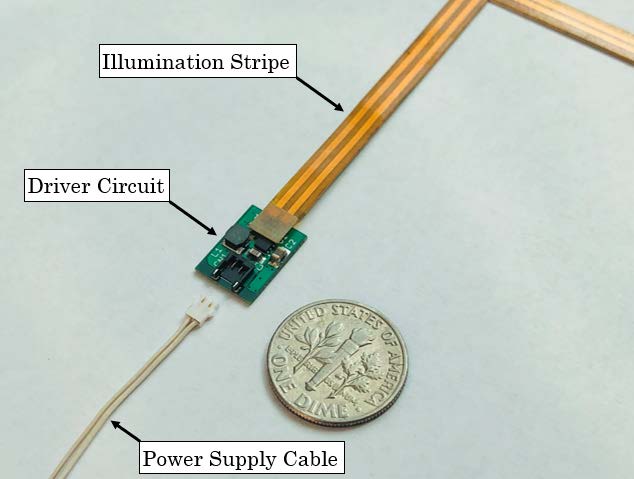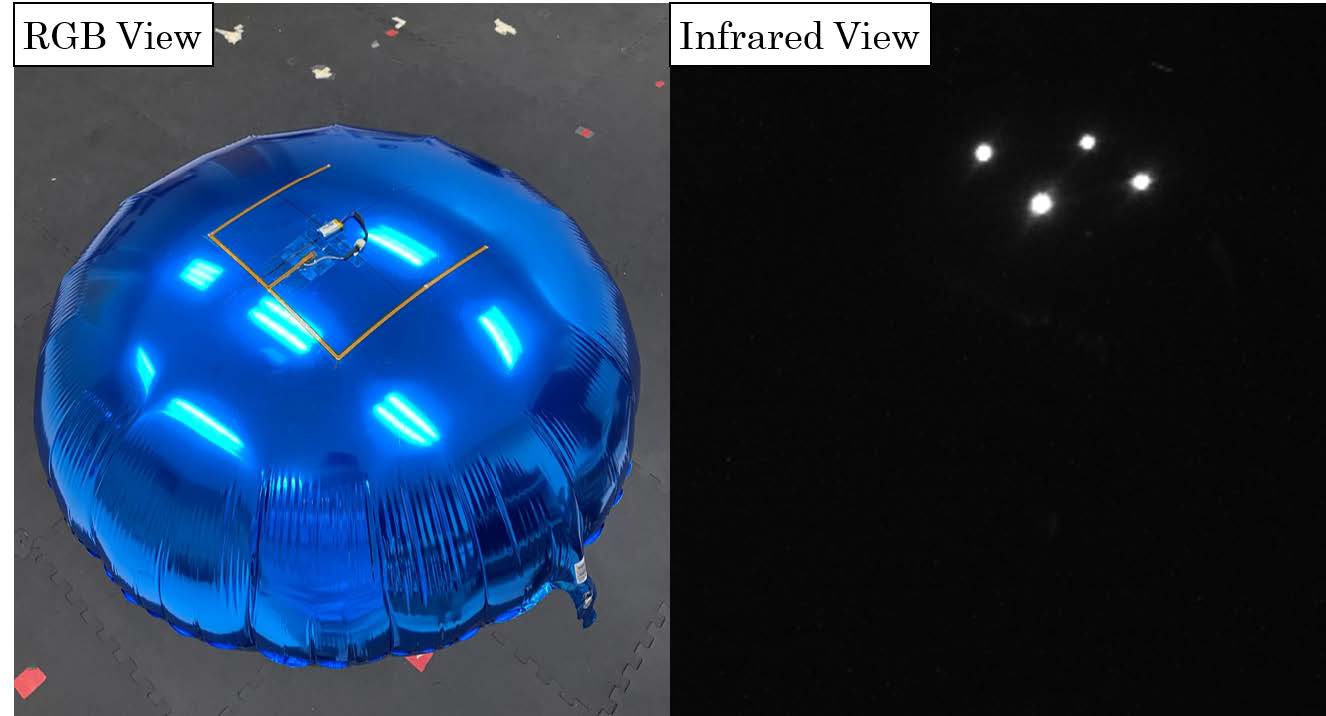This technology is an active positioning marker for indoor aerial robots that does not require external infrared illumination, resolving the challenge of excessive reflection in current optical motion capture systems. It consists of a flexible illumination stripe and a compact driver circuit with four small infrared light-emitting diodes (LEDs) integrated at the corners of the illumination stripe. These LEDs emit light at the same wavelength as conventional illumination lamps, which ensures their visibility to motion capture cameras. Built into a flexible substrate, the LEDs are located asymmetrically at the corners of the stripe, allowing the motion capture system to identify the attitude of the robot in 3D space. The constant current in the system’s driver circuit ensures consistent brightness through a wide range of input voltages.
By leveraging infrared LEDs in these active markers, this Georgia Tech innovation eliminates the need for external lamps that often create a reflection that can be incorrectly recognized as a passive marker. Without the external light source, the LED markers are significantly conspicuous from the background and can be easily distinguished by motion capture cameras, increasing the whole system’s reliability and accuracy.
This technology has been integrated with two others—an autonomous indoor robotic blimp (7136) and flight control system (8591)—into a full-scale prototype. (The three inventions can also be used independently.) Functionality tests of the integrated system demonstrated successful performance and reliability for nearly one year. Videos of these tests are available on the research team’s YouTube channel.
- Robust: Improves the reliability and accuracy of the motion capture measurement by eliminating excessive reflection
- Easy to use: Consists of only a miniature driver circuit and illumination stripe while requiring a simple plug-in power supply to operate
- Lightweight: Accommodates small robots with limited payload capacity—total weight of an active marker is approximately 1 gram
- Robotics
- Miniature blimps
- Micro aerial vehicles
- Small aerial telerobots
- Virtual reality
- Biomechanic measurement
Though passive motion capture markers can be useful for obtaining aerial robots’ position and attitude in an environment where GPS is unavailable, they often require lamps to ensure the reflective markers are visible to ceiling-mounted infrared cameras. These lamps can cause undesirable reflection that interferes with the motion capture system’s ability to properly identify the markers. There are a small number of active makers currently available, but none of them meets the strict payload limitation of miniature indoor aerial robots. In addition, external electronics and wiring are required to utilize the other currently available LED systems. This Georgia Tech innovation achieves a highly efficient and highly accurate motion capture setup that can be used with devices that have a limited payload capacity.

The system’s small-form driver circuit and illumination stripe connecting to the power supply

The active marker installed on a miniature autonomous blimp; the markers are highly conspicuous in the infrared view
